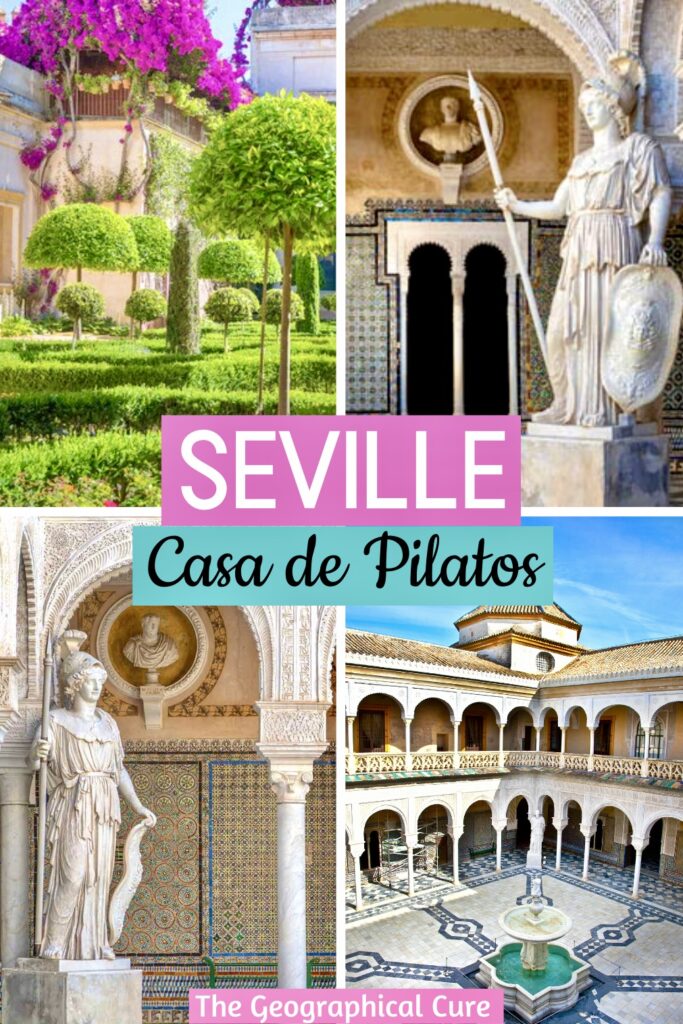Here’s my ultimate guide to experiencing the enchanting Casa de Pilatos in Seville. This elegant aristocratic palace is a true hidden gem that often goes unnoticed amid the city’s bustling crowds.
Tucked away in Seville’s historic district, about a 15 minute stroll from the Cathedral, Casa de Pilatos offers a serene escape from the city’s vibrant energy. It’s a sanctuary of tranquility amidst the lively Sevillano ambiance.
What added to my delight was the peaceful atmosphere in February. Only a handful of tourists, much like myself, seeking a cocoon-like retreat from the lively bustle and excitement of Seville.
The Casa de Pilatos provided the perfect respite, inviting us to immerse ourselves in its sumptuous 16th-century elegance.
So, if you’re craving a tranquil yet sumptuous experience that mirrors Seville and its residents, this guide is your gateway to unlocking the secrets of Casa de Pilatos.
>>> Click here to pre-book a ticket
A Short History of the Casa de Pilatos
Casa de Pilatos was the product of a union between the Enriquez and Ribera families, and is the permanent residence of the Medinaceli dukes. They bought up land to build a glorious Mudéjar mansion, likely to demonstrate their power and wealth.
Their son, Fadrique Enríquez de Rivera, completed the construction, adding many high Renaissance flourishes.
He would be one of the first Spanish nobles to don the mantle of cultured aristocrat and break with staid medieval traditions in favor of the enlightened Renaissance.
Casa de Pilatos means “Pilate’s House.” It was the nickname given to the place after Fadrique’s 1519 visit to Jerusalem where he saw the supposed Mansion of Pontius Pilate.
After his grand tour of Europe and the Holy Land, he returned and inaugurated the observance of the Holy Way of the Cross. He created a step-for-step replica, tracing 1,321 steps from the palace’s chapel to a spot outside the city walls.
The palace was declared a national monument in 1931.
So beautiful is the Casa de Pilatos that several films have been shot there, including four Hollywood blockbusters: Lawrence of Arabia in 1962, Ridley Scott’s 1492: Conquest of Paradise in 1992, Kingdom of Heaven in 2005, and Tom Cruise’s Knight and Day in 2009.
Guide To Casa de Pilatos: What To See
You can visit the casa on your own with a pre-booked ticket, take a private tour, or see it on a secret palaces of Seville tour.
The palace is accessed through a Renaissance gate. Enter, and you are immediately greeted by a stunning marble courtyard.
1. Casa de Pilatos’ Marble Courtyard
The 16th century courtyard is an exceptionally harmonious blend of stuccowork, tiles, coffered ceilings, and marble floors.
It’s surrounded by a gallery formed by white marble columns with Mudejar arches.
Inside, there are 24 busts of Spanish kings, Roman emperors, and other characters gracing niches in the walls, which were collected from the ruins of Italica.
These busts were basically my only company on my quiet tour. It was precisely the sort of company that I craved. Remote, immobile, and non-verbal.
The walls are spectacular, tiled with countless multicolored azulejo tiles. Fradrique was clearly a tile addict with a hefty budget. The balconies have beautiful Gothic balustrades.
There is a lovely Genoan fountain in Italian Renaissance style, as befitting the duke who became obsessed with Italy. It serves as the centerpiece of the courtyard.
2. Courtyard Statues
Four life size statues are placed in each corner of the courtyard.
Three hail from ancient Rome and one from ancient Greece, the martial looking Pallus Pacifera statue. (They are copies, but the atmospherics are still there.)
3. The Judges’ Rest Room
The Judges’ Rest Room is another beautifully decorated room in the Casa de Pilatos. Its name derived from the 71 members of the Sanhedrin of Israel that judged Jesus Christ before the Passion.
The room used as a place for private meetings and discussions among the house’s aristocratic owners. It was a room where important decisions and matters of governance were deliberated by the judges of the house.
The walls are adorned with ornate geometric patterns that are characteristic of Mudéjar design, which showcases the influence of Islamic architecture in Spain.
I never ascertained why there were large golden balls placed at the tables. But somehow they seemed quite attractive in situ.
4. The Praetor’s Room
The room’s name was intended to evoke Pilate’s Palace in Jerusalem.
An impressive wooden door leads to room, which is the largest and most beautiful of the rooms on the lower level. Every inch is decorated. The windows have carved flowers and stars and are set in intricate stucco carved arches.
The intricate coffered ceiling of the room is particularly fetching. It showcases delicate geometric patterns and motifs that harken back to both Roman and Renaissance aesthetics. It’s also carved with the coats of arms of all the Ribera ancestors.
5. The “Flagellation” Chapel
I broke my self-imposed audio-guided silence when I entered the Flagellation Chapel, bursting out laughing when I heard its name. The name does not age particularly well, right?
Hopefully, my burst did not encroach on the few other introverts. I peeked and didn’t see anyone frowning, didn’t really see anyone at all even. I carried on in silence, feeling no need to whip myself. I had already been whipped by the noise of Seville.
The tiny chapel is the oldest room in the palace. It has a peculiar religious melting pot of elements. It has a wide entrance arch finely decorated with Mudejar plasterwork.
In the center is a rose Christian column that represents the flagellation of Jesus, giving this chapel its graphic name. But there’s also a Roman statue depicting a pagan Roman god. The chapel is a hodgepodge of history.
6. Seville’s “First Staircase”
The monumental transitional staircase of the Casa de Pilatos is called “Sevilla’s first and most magnificent staircase.”
The staircase is a beautiful fusion of different architectural styles, including Gothic, Renaissance, and Mudéjar influences. Its design features a sweeping, double-flight layout
It’s made of marble and thousands of azulejos, and is a stunner. It connected the lower level or summer house with the upper level or winter house.
7. Dome
The ceiling directly above the staircase consists of a spectacular golden dome in a Mudéjar honeycomb style.
It was designed by Cristobal Sanchez, and is reminiscent of the the dome in the Ambassador’s Hall in the Royal Alcazar or in the Grand Hall of Ambassadors in the Alhambra in Granda Spain.
The staircase leads to the upper floor of the palace, which are the private quarters. Even if you don’t have a ticket to visit the upper floors, you can still climb the stairs and admire the room.
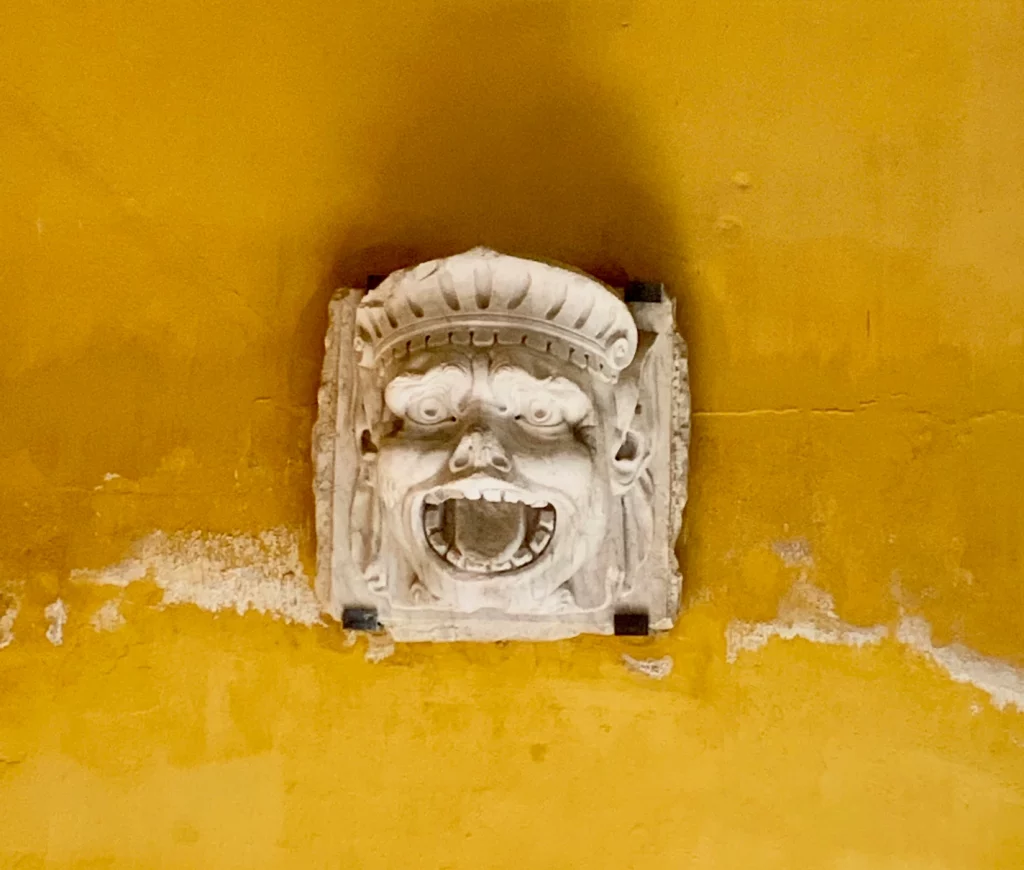
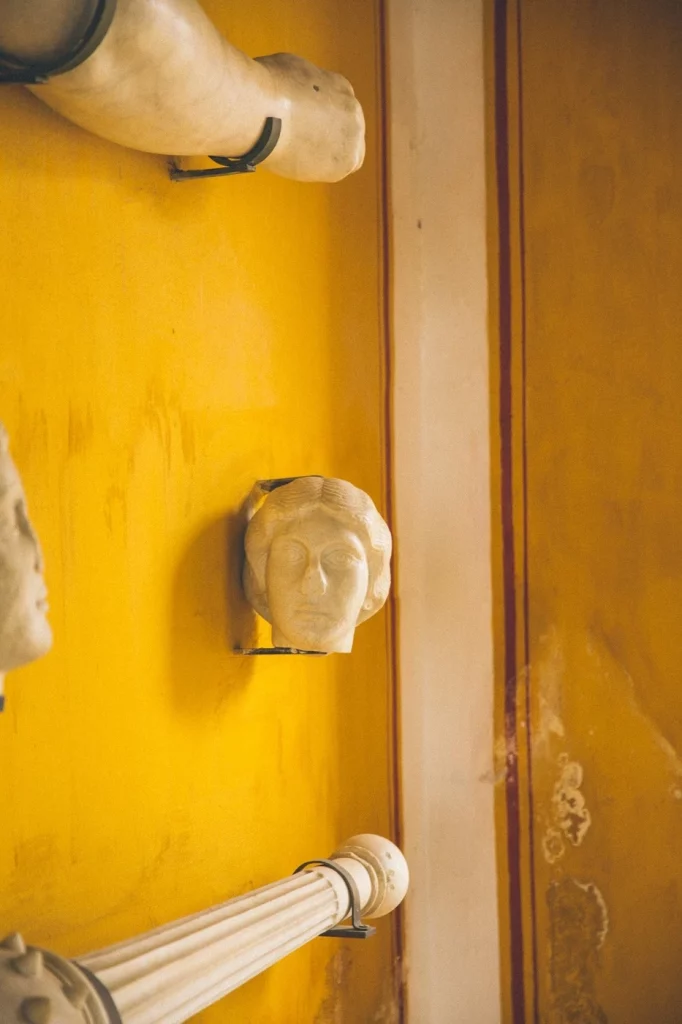
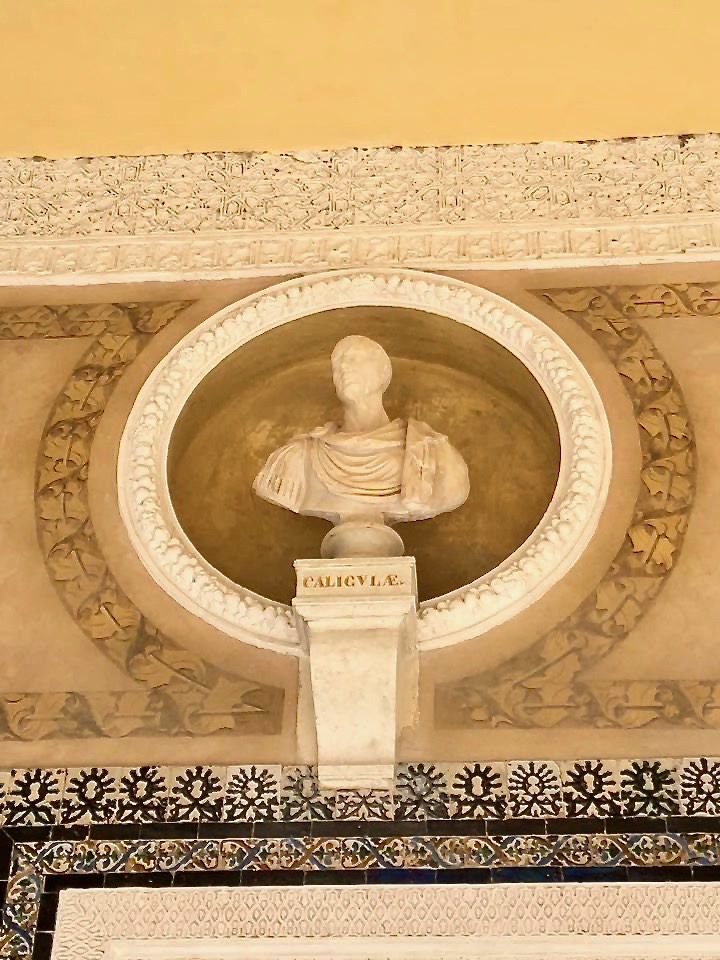
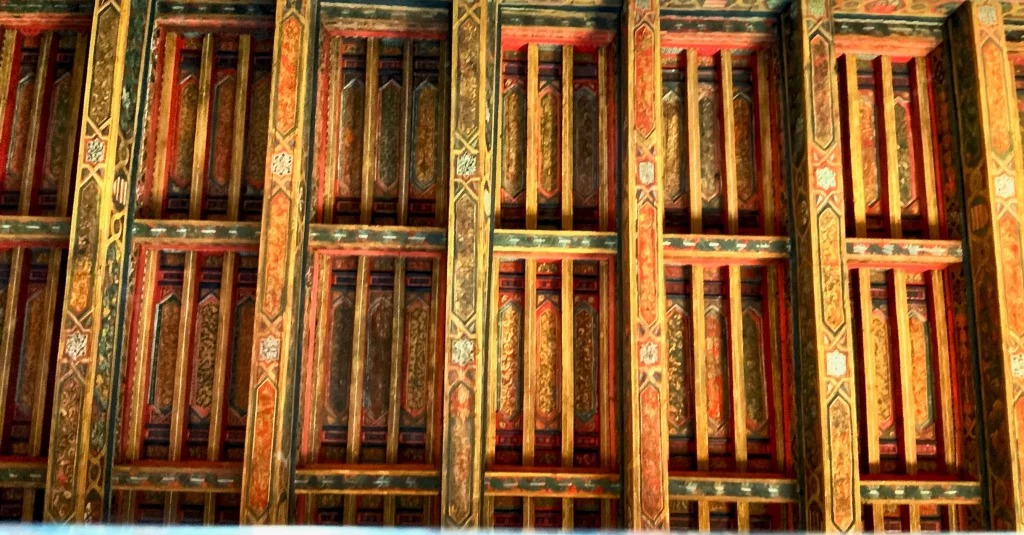
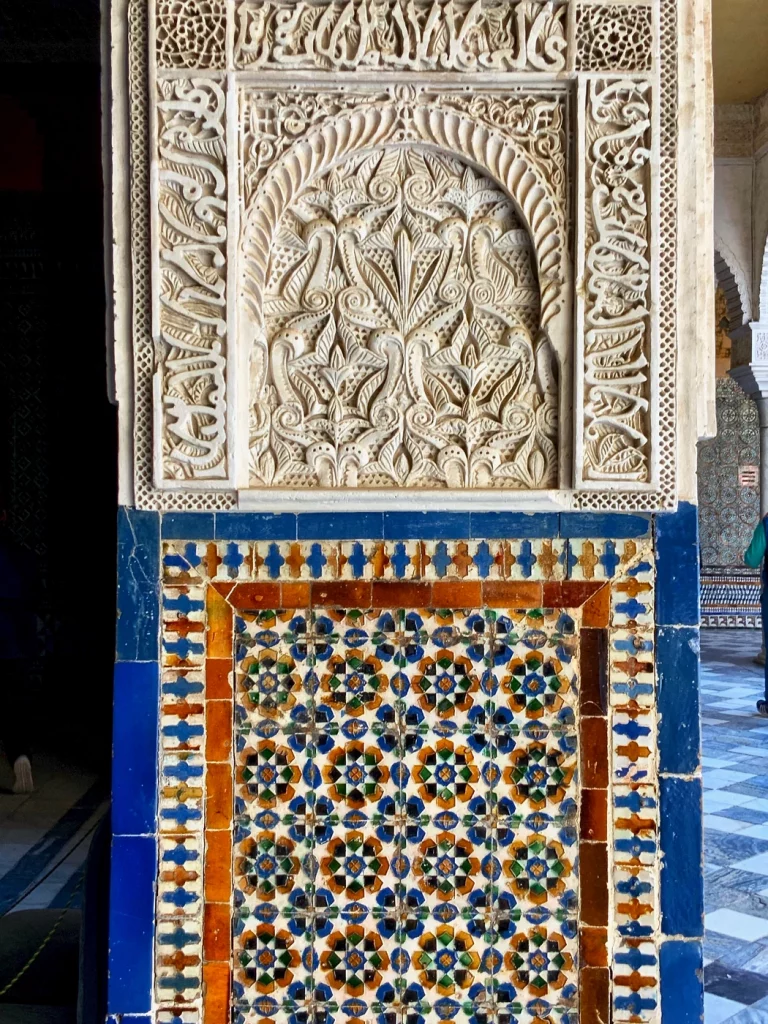
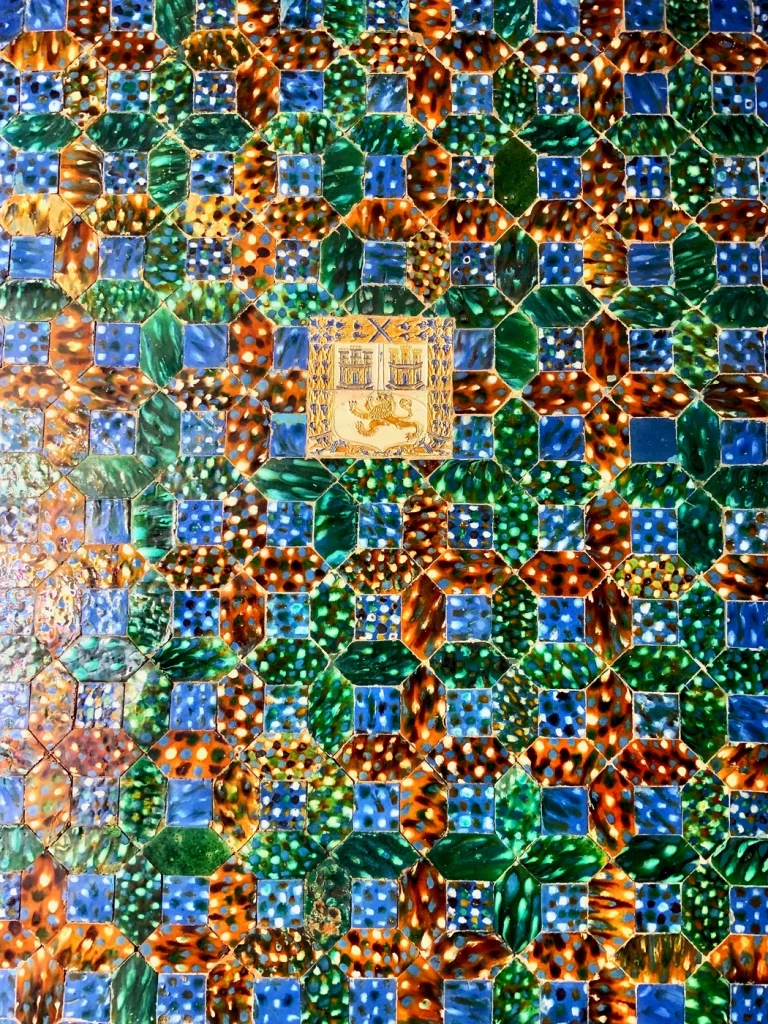
8. Lovely Details of Casa de Pilatos
There are lovely details everywhere. There are some fine busts brought back from Rome, even a bust of the notorious emperor Caligula.
The ceilings are divine. The doors and windows are also incredibly beautiful.
And there’s a rather strange and foreboding painting of a bearded woman by Jose Ribera. Lesser known than other Spanish painters, Ribera spent most of his career in Italy.
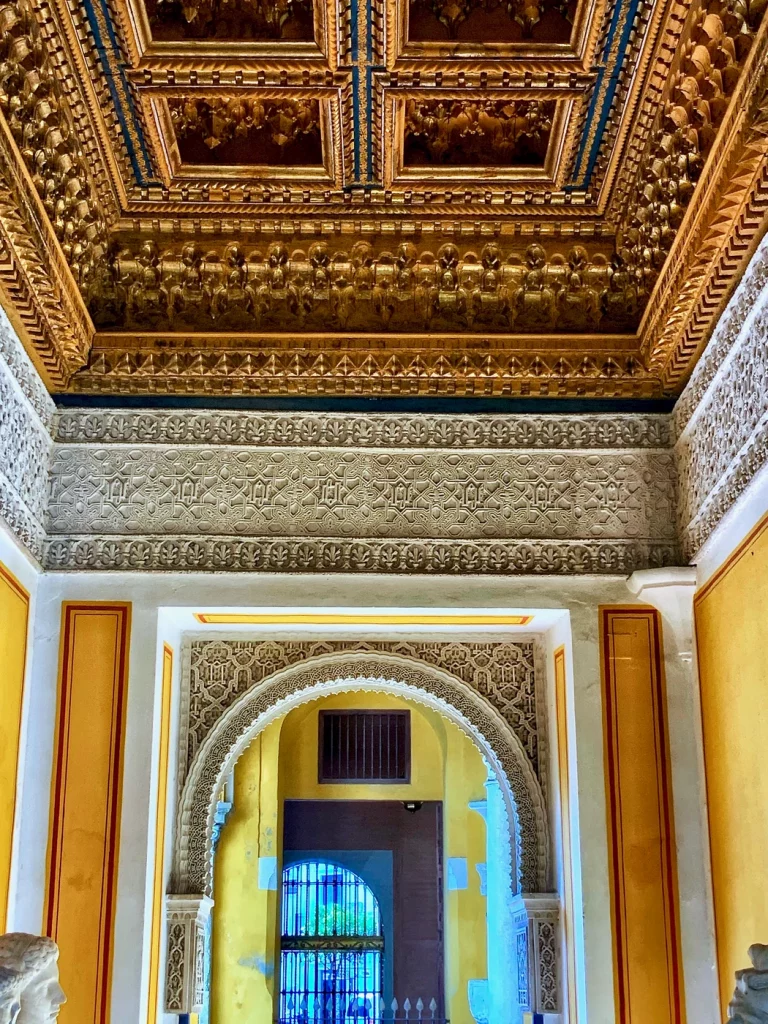
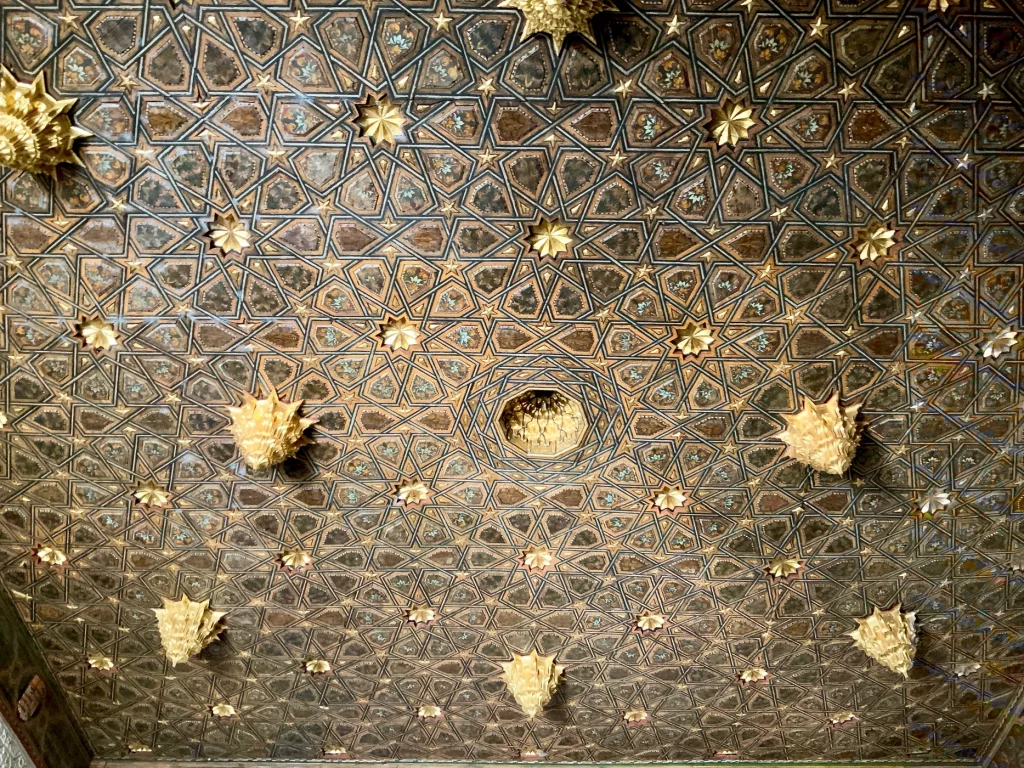
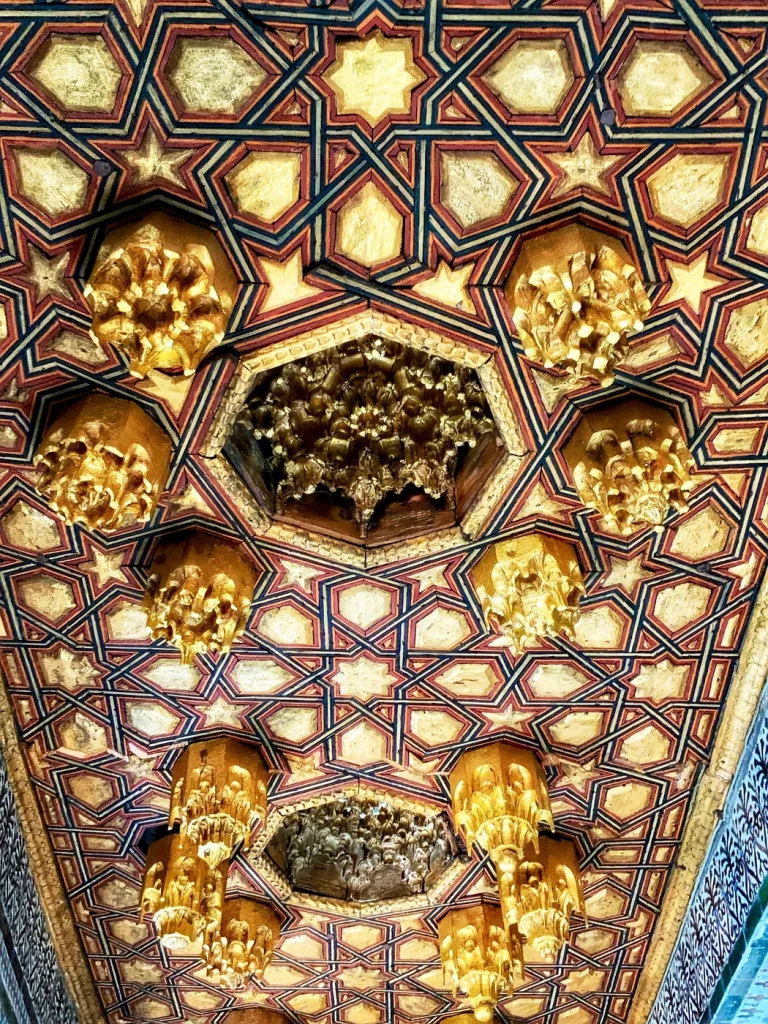
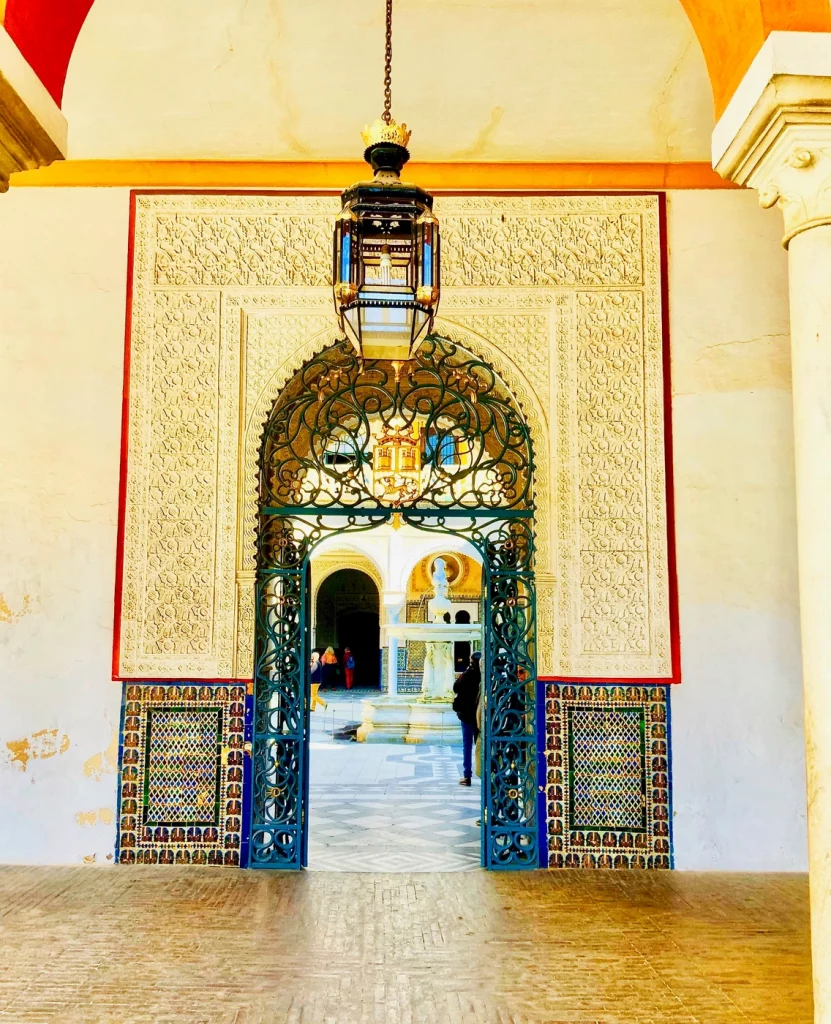
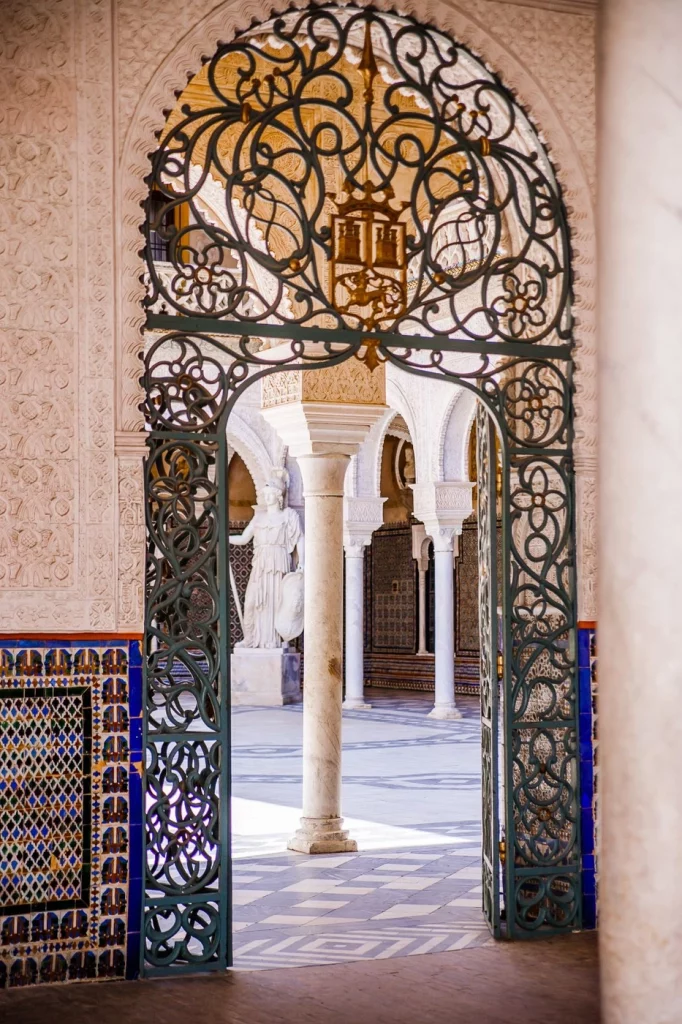
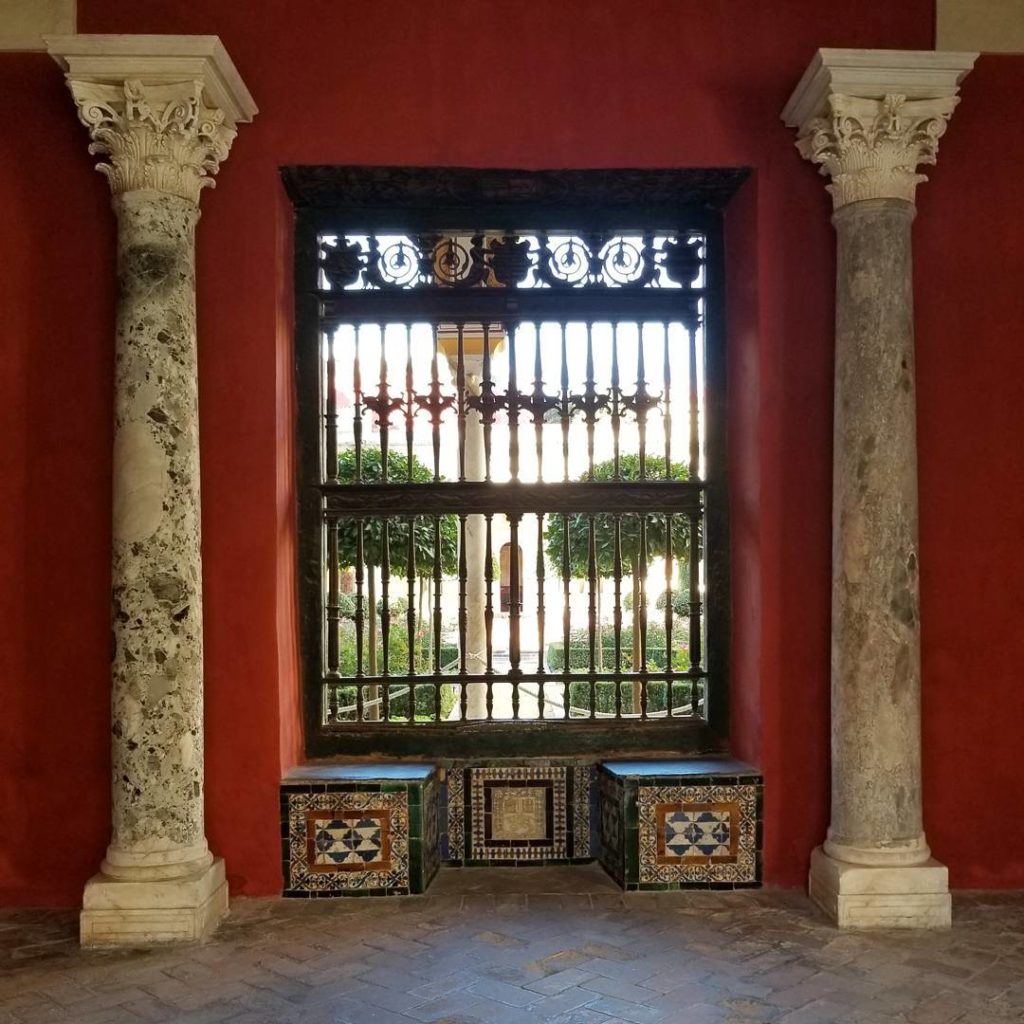
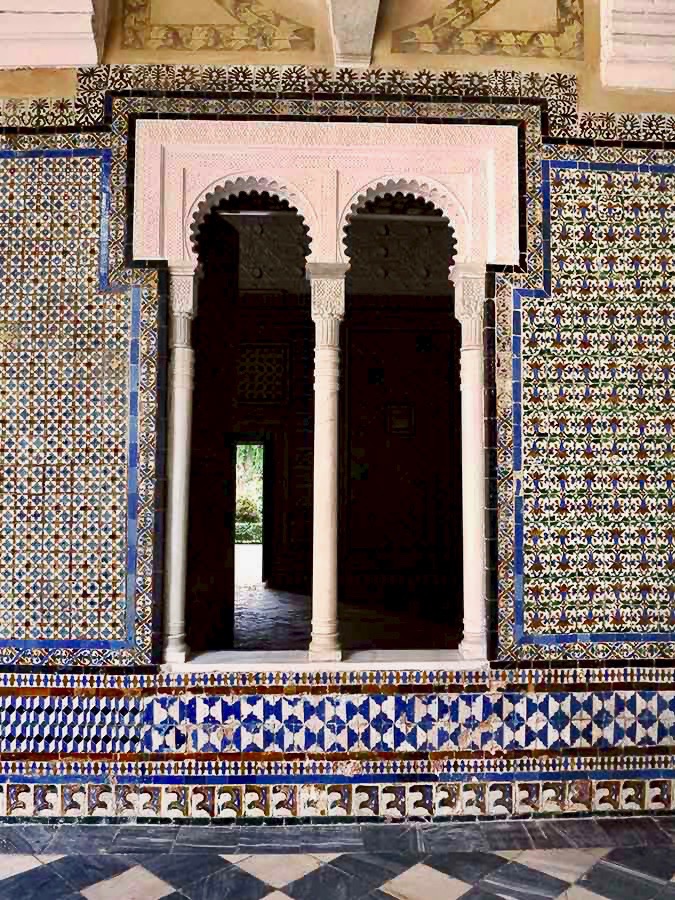
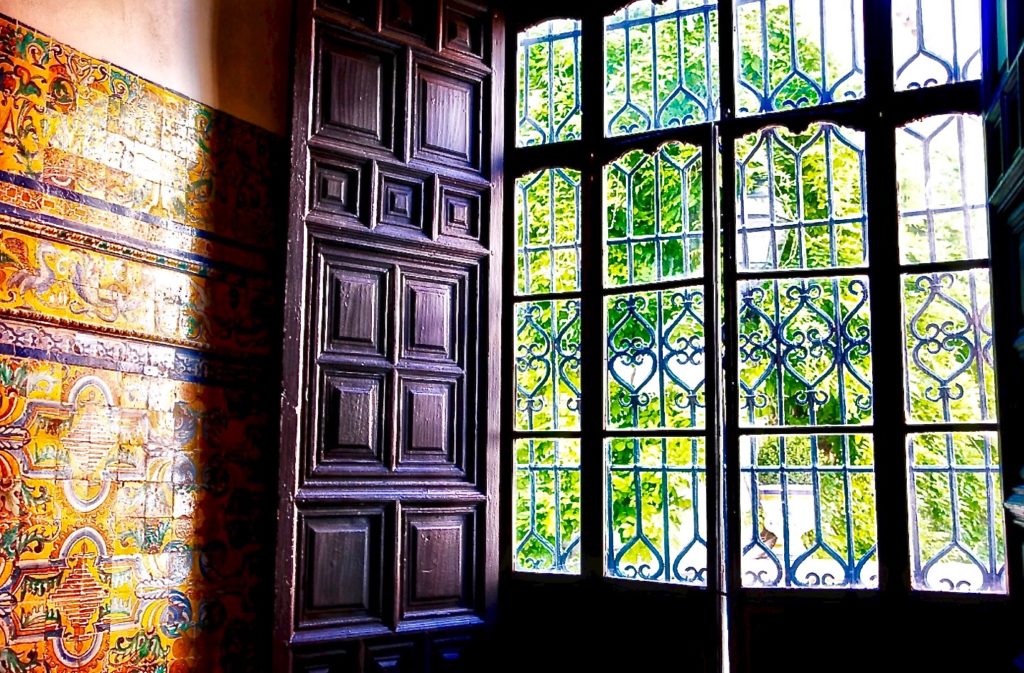
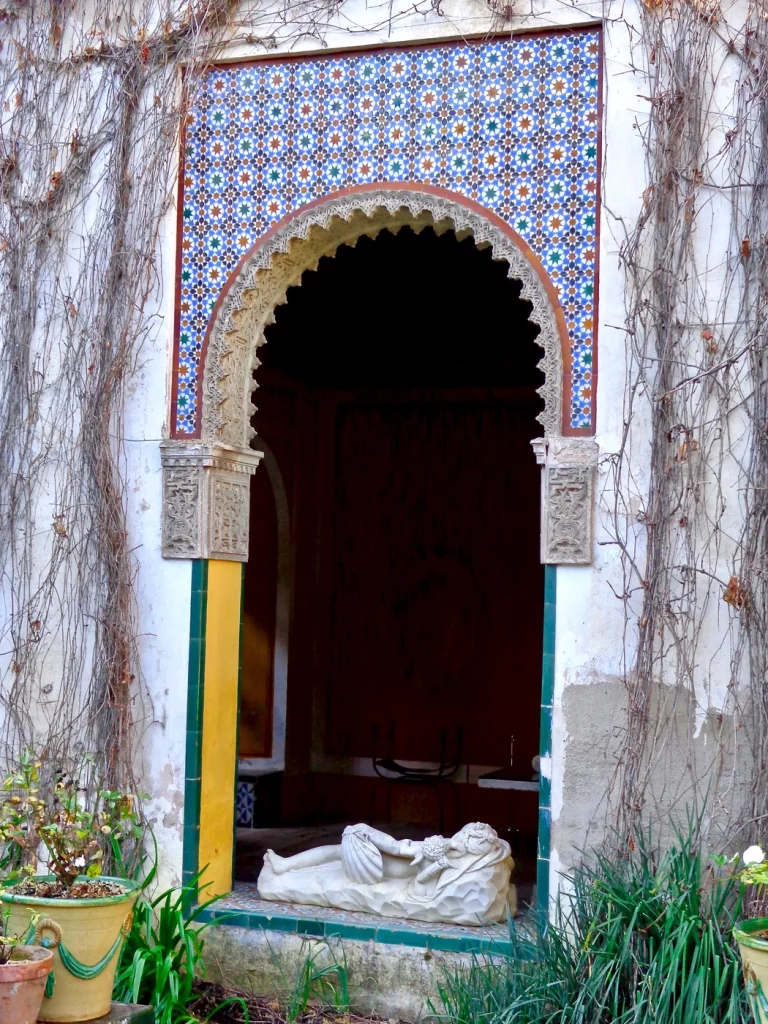
His triple portrait, Bearded Women, demonstrates a 17th century predilection: it was relatively common to depict people with physical or psychological abnormalities.
This painting stands as one of the most intriguing pieces in European art of its time. It showcases Ribera’s remarkable ability to take the unconventional and unfamiliar and craft it into a masterpiece filled with evocative power.
The artwork exudes a profound sense of drama and emotion, resonating with a poignant intensity that leaves a lasting impact. The skillful use of lighting further enhances the depth of the image, and the influence of Caravaggio is evident through the tenebrist style and striking interplay of light and darkness.
The original painting is now in the Prado Museum in Madrid.
READ: 2 Day Itinerary for Madrid
10. Upper Floor: the Winter Palace
The upper floor, known as the Winter Palace, was where the dukes escaped from the cold and wet of the winter. It’s a completely different universe, all Renaissance stylings.
You can’t take interior photos on the second floor, so I have nothing specific to regale you with. But the exterior is lovely.
My key memory is that there were a lot of paintings from the 16th to 19th centuries.
I particularly remember a Hercules fresco, a small Goya painting of a bullfight, and the splashy painted ceiling of the Pacheco room. The decorated ceiling was the first of its kind in Seville.
The architecture is not as stunning as the first floor, but it’s definitely worth the extra two euros and a half hour of your time to investigate.
Plus, the upper level affords great views of the courtyard below.
11. The Large Garden
The Jardin Grande, the large Italianate garden, makes you feel as if the Medinacelis have power beamed you to Italy.
Even in winter, it’s full of palm trees, orange trees, ponds, and flowers in the most beautiful colors.
In 1568, Benavenuto Tortello was hired to design the garden. He built Italian style loggias (or corridors) to store the antiquity collection of Fadrique’s nephew. It was known as an archeological garden.
It has a different look and feel than the palace. But I was still utterly entranced. I just sat there in the sun with my eyes closed.
I would say I was meditating, but that would be a blatant lie. I was contemplating or absorbing or sucking in the healing ions of the air. It was a restorative geographical cure type of moment.
Casa de Pilatos is a glorious melange of architecture, a mini Royal Alcazar. It’s a secret spot in Seville that’s well worth a visit and may unexpectedly capture your heart.
I had read that, if you’ve seen the Royal Alcazar, you needn’t bother with Casa de Pilatos. I couldn’t disagree more. It’s a lovely spot, the prototype of an Andalusian palace and a calm and serene oasis.
I felt like I’d discovered secret treasure without the throngs of tourists in Seville. The biggest, splashiest, glittery place isn’t always better. (For example, I’m not really a fan of Seville’s garish Baroque churches.).
Sometimes, an intimate spot, with time and space for contemplation and observation, is what most suits. For me, as I sought refuge from calamitous nature of the golden city, it was the perfect tonic.
Practical Guide & Tips for Visiting Casa de Pilatos:
Address: Plaza de Pilatos, 1, Seville
Hours:
- Winter (Nov-March) : everyday, from 9:00 am to 6:00 pm.
- Summer (April-Oct): every day, from 9:00 a.m. to 7:00 p.m.
Entry: entire palace: € 12 (free audioguide), Ground floor only: € 10.
Phone: +34 954 22 52 98
I hope you’ve enjoyed my guide to Casa de Pilatos. You may enjoy these other travel guides and resources for southern Spain:
- 10 day itinerary for Andalusia
- Most Beautiful Cites and Towns in Andalusi
- 3 day itinerary for Seville
- 1 day itinerary for Seville
- 27 Must See Attractions in Seville
- Best day trips from Seville
- Must see sites in Granada
- Guide to Seville’s Royal Alcazar
- Guide to Granada’s Alhambra
If you’d like to visit the Casa de Pilatos in Seville, pin it for later.

